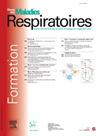Evaluation of perfusate composition correction during 12-hour ex-vivo lung perfusion in swine
IF 0.5
4区 医学
Q4 RESPIRATORY SYSTEM
引用次数: 0
Abstract
Introduction
Ex vivo lung perfusion (EVLP) is a preservation technique that allows the evaluation and reconditioning of marginal donor grafts, thereby expanding the donor pool. However, EVLP is currently limited to 6 hours in clinical practice and at least 30 % of grafts fail to meet transplantation criteria at the end of perfusion period [1]. Today, EVLP is mainly used to assess lung function before lung transplantation rather than to recondition damaged lungs. We aim to prolong the duration of EVLP as this would allow the application of therapies and potentially increase the number of lungs available for transplantation. We hypothesize that maintaining pH, electrolytes, and glucose levels in the perfusate would allow EVLP for more than 6 hours while preserving organ integrity. Thus, we investigated the effect of a perfusate correcting solution during a 12-hour EVLP in a porcine model.
Methods
Twelve porcine lung blocks were collected and cold-preserved prior to 12 hours of normothermic EVLP. The lung blocks were allocated equally into two groups, according to the perfusate solution. All lung blocks were perfused with STEEN solution™, 100 mL of which was replaced every two hours with either fresh STEEN solution™ (standard group, n = 6) or a modified solution (1/3 STEEN solution™, 1/3 glucose solution [2.5 %], 1/3 sodium bicarbonate solution [14 mg/mL]) designed to correct the perfusate composition (corrected group, n = 6). Perfusate electrolytes, glucose, cytokines, pH, partial oxygen pressure (PO2), pulmonary vascular resistance (PVR), and compliance were measured. After the EVLP period, the left lungs were transplanted into donor-related pigs. The right lungs were used for histology and electron microscopy.
Results
During EVLP, perfusate correction succeeded in maintaining electrolyte and pH, within physiological ranges. However, glycemia increased at a higher level than expected. Higher density of Kohn's pores, as well as less edema and more hyaline membranes, were observed in the corrected group after EVLP. Lung compliance and oxygenation tend to be higher in the corrected group without reaching significance. PVR was similar in both groups, and no significant difference was observed in ΔPO2 between groups after transplantation.
Conclusion
We succeeded in correcting perfusate electrolytes levels and pH, but not maintaining glycemia in physiological ranges. In these conditions, no benefit was clearly demonstrated in the corrected group, while some histological changes occured. Further studies are needed to properly correct perfusate composition and maintain glucose levels within physiological ranges. Thus, the effect of an efficient perfusate composition correction on the duration of EVLP remains unknown and still needs to be investigated.
求助全文
约1分钟内获得全文
求助全文
来源期刊

Revue des maladies respiratoires
医学-呼吸系统
CiteScore
1.10
自引率
16.70%
发文量
168
审稿时长
4-8 weeks
期刊介绍:
La Revue des Maladies Respiratoires est l''organe officiel d''expression scientifique de la Société de Pneumologie de Langue Française (SPLF). Il s''agit d''un média professionnel francophone, à vocation internationale et accessible ici.
La Revue des Maladies Respiratoires est un outil de formation professionnelle post-universitaire pour l''ensemble de la communauté pneumologique francophone. Elle publie sur son site différentes variétés d''articles scientifiques concernant la Pneumologie :
- Editoriaux,
- Articles originaux,
- Revues générales,
- Articles de synthèses,
- Recommandations d''experts et textes de consensus,
- Séries thématiques,
- Cas cliniques,
- Articles « images et diagnostics »,
- Fiches techniques,
- Lettres à la rédaction.
 求助内容:
求助内容: 应助结果提醒方式:
应助结果提醒方式:


